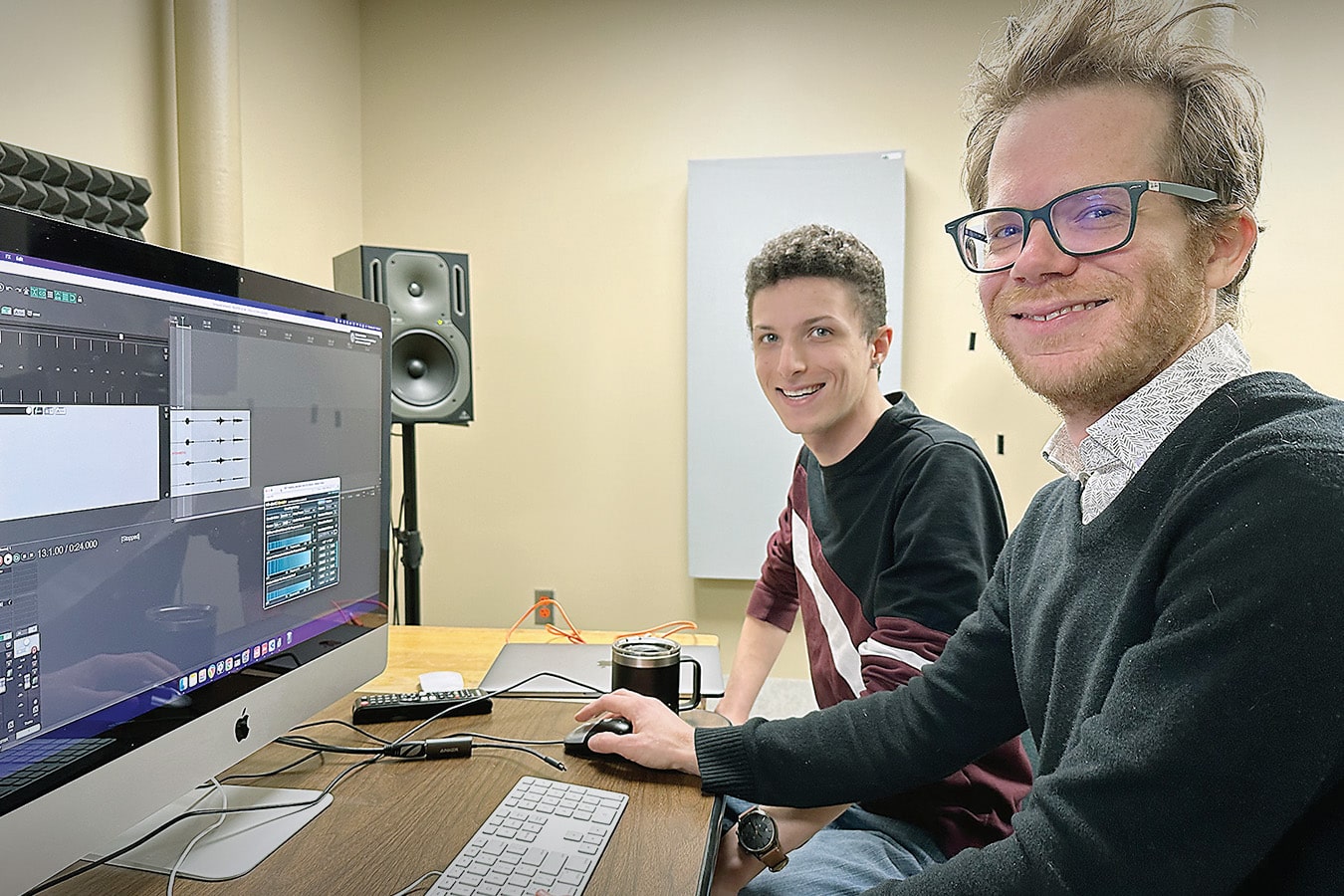Resonant Landscapes: DSU researchers make music with nature
December 13, 2023
Written by Mary Askren, Freelance writer for DSU
As the gentle applause of running water flowed from speakers in a sound lab at Dakota State University, a cluster of blue dots danced on a monitor. Dr. Tate Carson, Assistant Professor in the College of Arts & Sciences, and fellow researcher Carter Gordon were listening to raw footage from a recent field trip to Newton Hills State Park.
“It’s about engagement with the sounds themselves,” Carson said, explaining that in a society driven by images, focusing on sound creates a different awareness of the world.

“Resonant Landscapes: Soundscapes of South Dakota” is a research project for which Carson received a Faculty Research Initiative grant and Gordon received a Student Mentored Research Initiative grant. Newton Hills is one of thirteen South Dakota state parks at which the two will make field recordings as part of the grant-funded project.
Multi-dimensional, the project involves making field recordings, editing them, using the internet and GPS technology to make them available to individuals on the University campus, and composing music based on the recordings.
“The project at its heart is experimental,” Carson said. “We’re not sure how it’s going to come out.”
Carson said his research usually begins with what-if questions. In this case, he was curious about making field recordings when trees were bare and birds had migrated. He imagined it would be like trying to take photographs in a low-light situation. He was also curious about deviating from the tradition of recording untouched nature by selecting natural settings which included a human presence.
Gordon, who is pursuing a double major in Sound Design and Artificial Intelligence, brought his own curiosity to the project.
“I’m always interested in learning something new,” he said. With this project, he will not only learn how to use new equipment purchased specifically for the project, but will also try his hand at composing music.
When Gordon or Carson hikes into a park, he carries an ambisonic microphone. Designed to capture “a 360-degree panorama of sound,” according to Carson, it allows the sounds to be saved using eight separate channels. This creates a higher resolution recording and more realistic soundscape. Despite having these capabilities, the equipment is compact enough to fit in a backpack.
After completing the recordings, they will use them to electronically create music. Carson compares the process to making a visual collage; they will take electronic samples and juxtapose them to create something new. This work will be presented at the DSU Research Symposium in March.
In addition, they plan to make edited recordings available on the University campus. Using smart devices with earbuds, individuals will be able to listen to sounds recorded at specific parks by going to specific locations on campus which have been marked using GPS technology.
“We will give people the ability to experience all the parks in South Dakota,” Carson said.